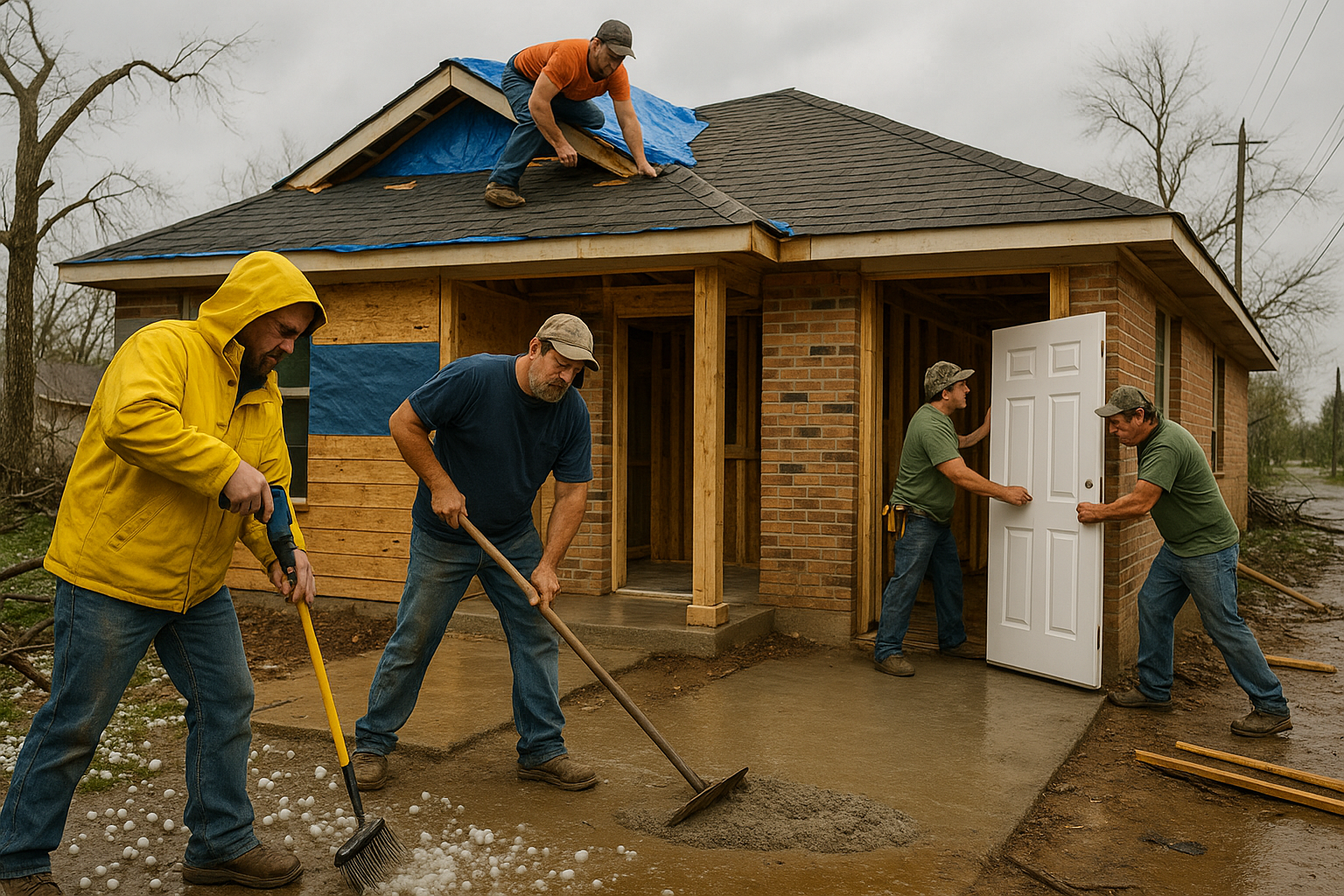It always starts the same way. A family is blindsided by disaster—a pipe bursts while they’re at work, a hailstorm punches through a skylight, floodwater creeps in under the front door during a spring downpour. Within hours, the ceiling is sagging, baseboards are soaked, and the drywall feels like a damp sponge. The house smells like wet carpet and panic.
That’s when the remediation company shows up. They respond fast—quicker than most insurance adjusters, often quicker than the homeowner knows what to ask. They’re polite, professional-looking, and armed with moisture meters and clipboards. “We’ll get this cleaned up in no time,” they say. “We’re a full-service firm. We can do the dry-out and take care of the remodel too.”
That’s the moment everything quietly goes off the rails. These contractors—called in after wind, hail, flood, or water leak events—routinely insinuate themselves into the role of remodelers. They were brought in to extract water, tear out damaged materials, and maybe run a few dehumidifiers. But by the end of that first visit, they’ve secured a signature on a vague work authorization and are suddenly acting as a full-blown general contractor. They start talking about flooring choices and cabinets, but nobody ever mentions permits, code compliance, or who’s actually supervising the job. And from there, the damage starts all over again—only this time it’s man-made.
I was asked to inspect one of these homes. It was a modest two-story in a 10-year-old subdivision, flood-damaged after a spring storm had backed up runoff into the ground-level living room. The remediation company arrived the next morning and started tearing out carpet, baseboards, and lower drywall. All well and good—until they started rebuilding. They replaced the drywall before the framing was dry. They installed vinyl plank flooring over a still-damp slab with no vapor barrier. They reconnected a gas-fired water heater without checking the draft or combustion air. They even “repaired” electrical wiring that had been submerged—no permit, no inspection. On the surface, it looked finished. But behind the paint, it was a lawsuit waiting to happen.
These flood contractors operate in a gray zone. Most have no formal licensing in general contracting, plumbing, HVAC, or electrical. In Texas, that’s perfectly legal—state law does not require a general contractor license. Many of these companies bank on that loophole. They advertise “turnkey disaster recovery,” but what they’re really offering is unlicensed remodeling disguised as restoration. In nearly every one of these projects, I find no permits, unqualified labor touching mechanical systems, wet materials sealed up and hidden, missing fireblocking, improperly terminated wiring, and no documentation showing the structure was ever dry. But the invoices are inflated, the work looks “done,” and the homeowner is left holding the bag when something fails—or when the home is inspected for sale and the truth comes out.
For attorneys, these scenarios are both goldmines and minefields. If you represent a homeowner, you have immediate leverage. You can prove substandard work, deviation from code, and likely a breach of both express and implied warranty—especially when the contractor misrepresented their qualifications. If you’re defending a builder who subcontracted with one of these firms after a storm event, you need to dig deep. Ask whether the contractor was qualified, whether permits were pulled, and whether the scope included licensed reconstruction or just dry-out.
If the contractor played both demo crew and remodeler, there’s a good chance they failed at both. One of the more dangerous practices is rebuilding on top of materials that were not actually dry. These contractors often use handheld moisture meters designed for surface readings and claim framing is “dry” when it’s merely not saturated. That’s how mold blooms inside wall cavities weeks or months after the walls have been closed up and painted. No microbial clearance testing. No documentation of humidity logging. No third-party verification. Just fans, spray paint, and wishful thinking.
After a flood or water event, remediation and reconstruction must be treated as separate scopes of work. The company that sets fans and meters should never be the one designing the rebuild. Once the structure is dry and cleared by a third-party assessor, the project should stop. That’s when a qualified, properly credentialed builder or contractor should step in—with plans, permits, and a clear chain of responsibility. The problem is, homeowners don’t know that. They’re overwhelmed and desperate. And the remediation companies exploit that gap with a pen and a smile.
Just because someone knows how to tear out wet drywall doesn’t mean they know how to rebuild a habitable home. Homeowners should demand separation between mitigation and construction. Attorneys should ask hard questions about licensing, permitting, and scope. And inspectors like me will keep turning over freshly painted walls—only to find rot, mold, or worse just behind them.
Aaron Miller is an ICC-certified Residential Combination Inspector (R-5), licensed TREC inspector, and expert witness specializing in construction defect and envelope failure litigation across the State of Texas. He has inspected over 13,000 homes and has no patience for pretend contractors with dehumidifiers and delusions of grandeur.






